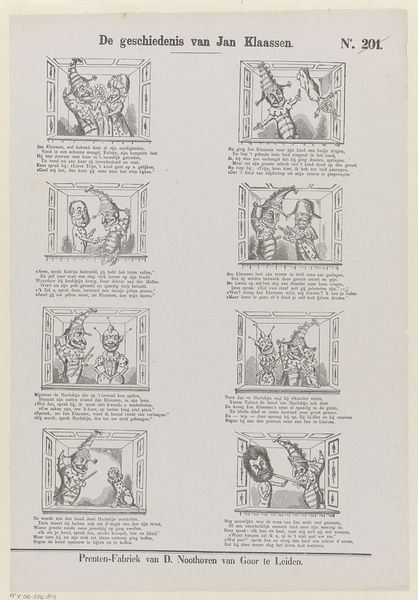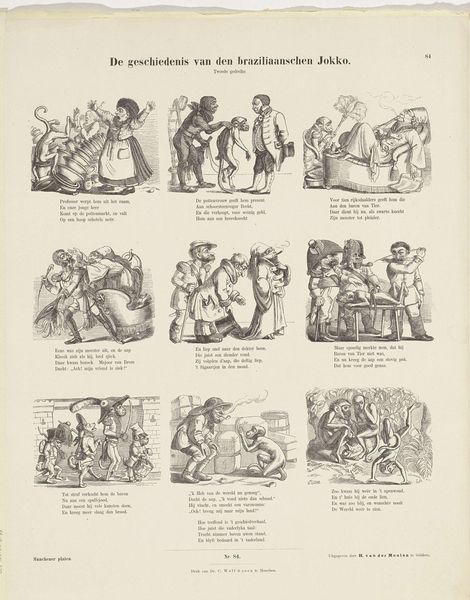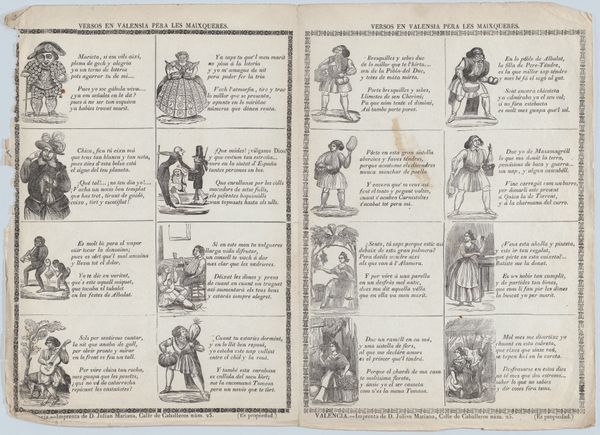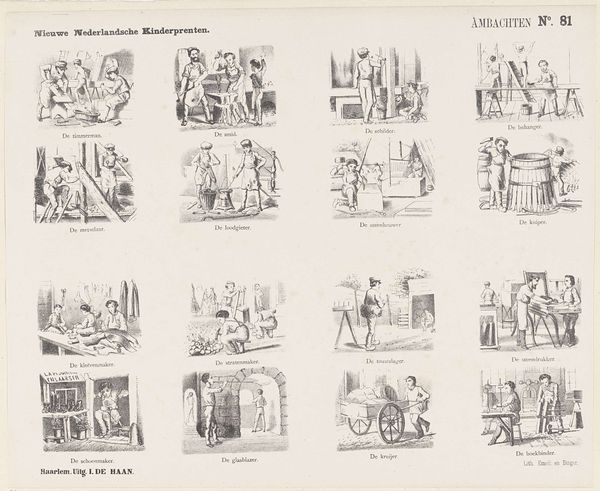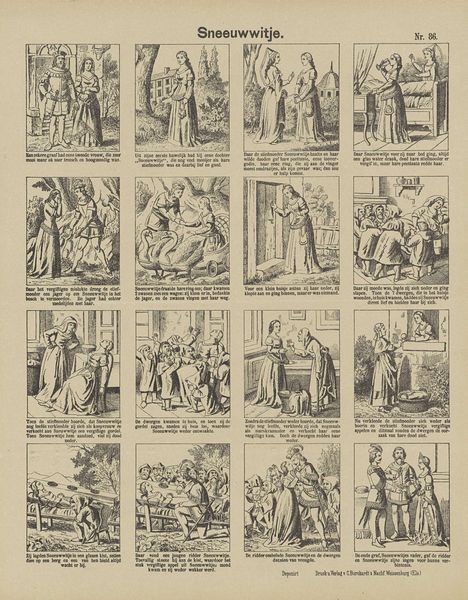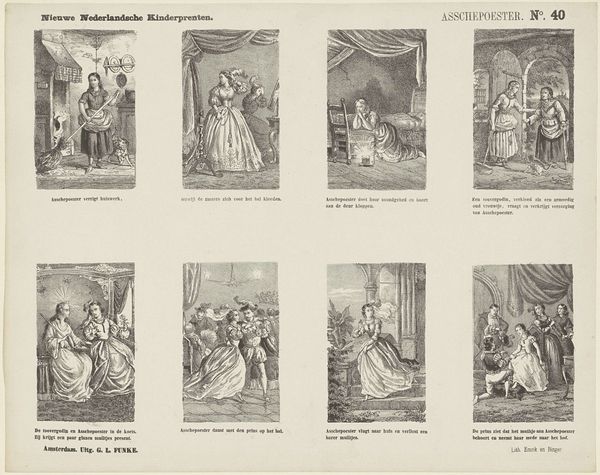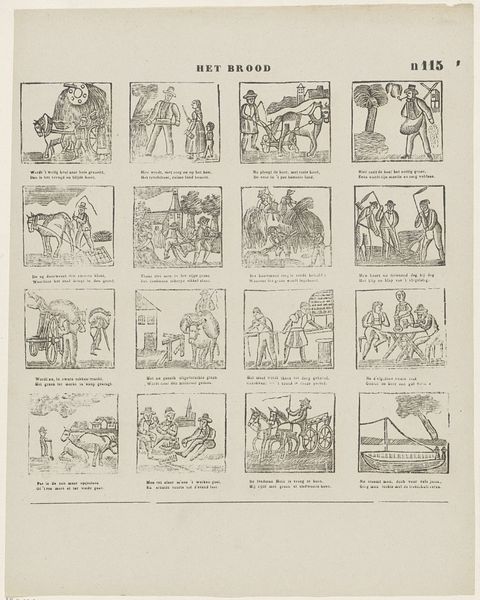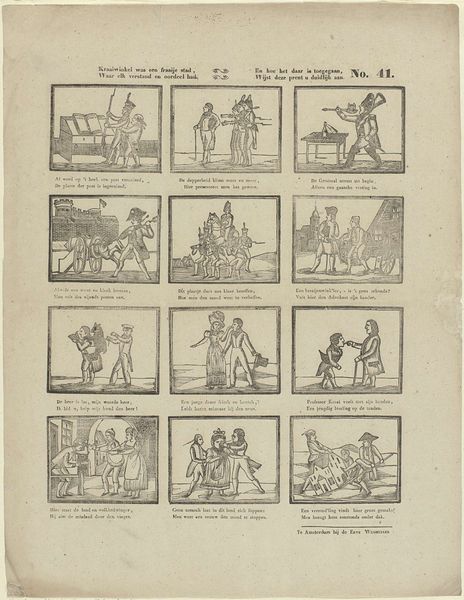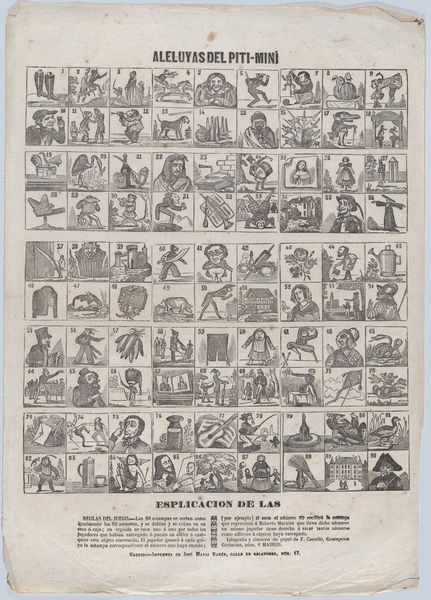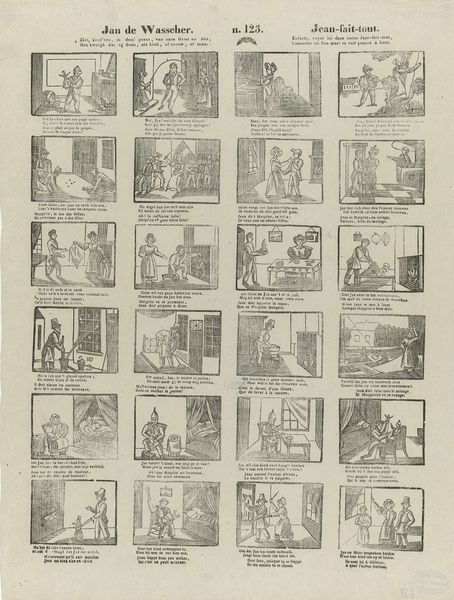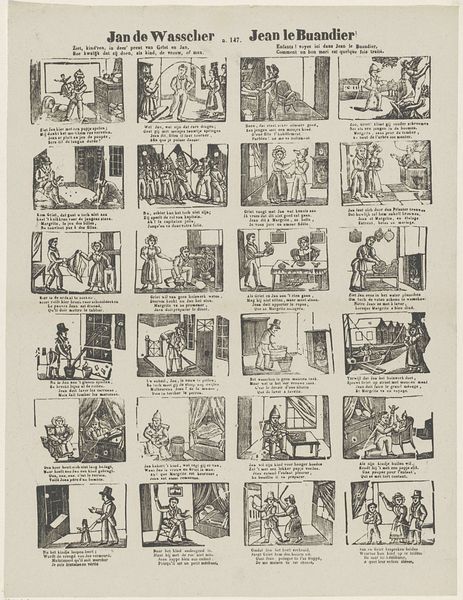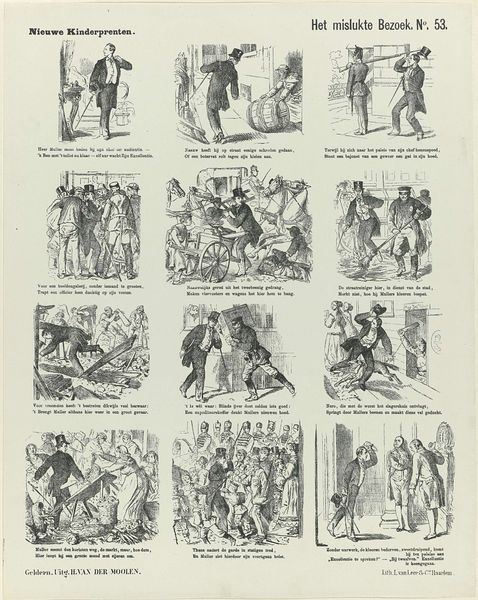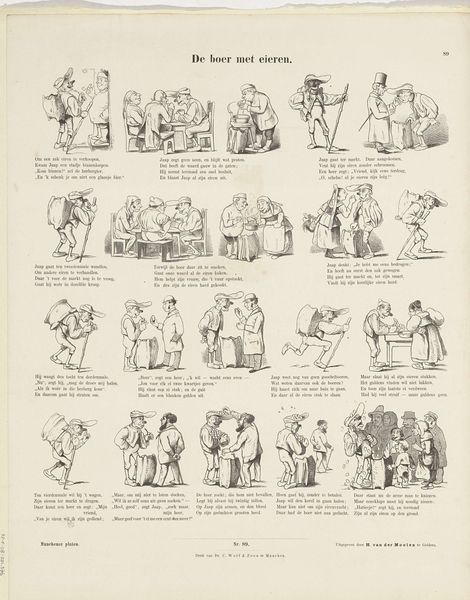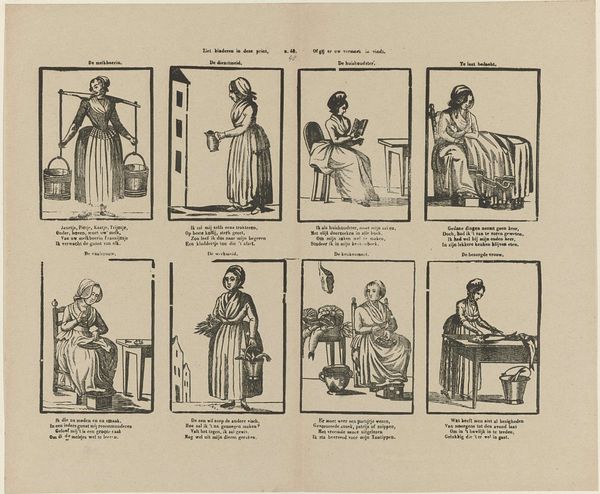
Geschiedenis van Klein Duimken / Histoire de Tom Pouce 1800 - 1833
0:00
0:00
philippusjacobusbrepols
Rijksmuseum
print, engraving
#
comic strip sketch
#
narrative-art
#
comic strip
# print
#
folk-art
#
comic
#
genre-painting
#
northern-renaissance
#
engraving
Dimensions: height 297 mm, width 393 mm
Copyright: Rijks Museum: Open Domain
Curator: Let's take a closer look at this engraving from the Rijksmuseum collection, titled "Geschiedenis van Klein Duimken / Histoire de Tom Pouce," dating back to somewhere between 1800 and 1833 and attributed to Philippus Jacobus Brepols. It tells the tale of Tom Thumb through a series of small, framed scenes, almost like a comic strip. Editor: My immediate impression is how stark and almost unsettling the imagery is, especially for a children's story. There's a stiffness in the figures, and the black and white contrasts create a world that feels almost menacing, rather than whimsical. What story do you read through this layout and these symbolic choices? Curator: Well, we know Tom Thumb is a tiny figure, often at the mercy of a larger, sometimes hostile world. Perhaps Brepols uses that contrast in scale to speak to broader themes of power and vulnerability in society, particularly during the tumultuous late 18th and early 19th centuries, which are the sociohistorical backdrop of this Dutch take on the familiar European folk tale. Tom is presented not just as an innocent child but as a symbol of resilience. I think this connects this visual language to broader struggles during periods of societal upheaval. The rigid style reflects the controlled social order; Tom Thumb then becomes this subversive force who resists that. Editor: I find it compelling how folk art so often encodes class tensions and resistance into simple tales, giving them this universal quality and staying power. Looking closely at the giant menacing creature looming above him and labeled 'Pickles' makes me consider what cultural anxieties the 'giant' could signify, especially in the wake of various political revolutions and social turmoil throughout Europe. There's this overtone of warning through simple folk morality, which provides very important social lessons and context to its audience and community. Curator: That’s a fascinating perspective. By layering historical and social readings onto the existing folklore of these archetypal images, they can communicate across generations while accumulating new layers of meaning. It allows viewers to connect with that moment, which reflects how these universal narratives speak directly to audiences by confronting existing hierarchies. Editor: Exactly! The durability and adaptability of the symbol of a "Tom Thumb" transcends context and keeps generating new perspectives for society, while rooting new connections in folk narratives. Curator: Indeed. There's something profoundly satisfying about the intersection of simplicity and depth found within the history of Kleine Duimken here.
Comments
No comments
Be the first to comment and join the conversation on the ultimate creative platform.
